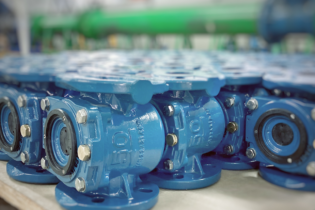Minimising toxic substances, decreasing production costs
GEA Westfalia Seperator Group, the world’s leading company for mechanical separation technology, has set another worldwide standard in terms of economy, efficiency and environmental protection. GEA Westfalia Separator South Africa, part of the worldwide group, offers an answer to the intensive use of water in the paper-making industry that reduces the environmental impact of wastewater by minimising toxic substances and decreasing production costs. The processThe paper-making process has one of the highest levels of water consumption known to man. But without the physical properties of water, it would not be possible to achieve the consistency needed to turn natural raw and recycled materials into paper. This causes a high concentration of wastewater, especially when recycling printed waste. Depending on the desired paper quality, additional chemicals – for instance whiteners, inks and dust-inhibiting agents – may have to be removed from the water at the end of the production process.
Decanters and separators, supplied by the company, assist in maximising the separation of solid components from clear water which can be re-used. The volume of fresh water that is required is reduced and expensive chemicals can be recycled into the process. A closed system also ensures no aerosol emissions.
There is a notable reduction in the cost of storing due to the increase of dry matter that can be obtained. The process also reduces production time by offering a straightforward operation and corrosion protection for all components due to stainless steel manufacturing.
Back in time
Papermaking is known to have been traced back to China about 105 CE, when Cai Lun, an official attached to the Imperial court during the Han Dynasty, created a sheet of paper using mulberry and other bast fibres along with fishnets, old rags, and hemp waste. However a recent archaeological discovery has been reported from Gansu province of paper with legible Chinese writings on it dating from 8 BCE, while paper had been used in China for wrapping and padding since the 2nd century BCE. Paper used as a writing medium became widespread by the 3rd century, and by the 6th century toilet paper was starting to be used in China as well. During the Tang Dynasty paper was folded and sewn into square bags to preserve the flavour of tea, while the later Song Dynasty was the first government on Earth to issue paper-printed money.







